|
Nestled in the scenic landscape of modern-day Turkiye, the ancient city of Priene offers a fascinating window into the Hellenistic period. Founded in the 4th century BCE, Priene was a prominent city in the region of Ionia, known for its strategic location, architectural marvels, and cultural significance.
Priene's origins can be traced back to the 4th century BCE when it was established as a Greek colony. The city was strategically situated on the slopes of Mount Mycale, overlooking the fertile plains of the Maeander River. This advantageous location provided Priene with natural defenses and access to vital trade routes, contributing to its prosperity.
One of the most remarkable aspects of Priene is its urban planning. The city was designed according to the principles of Hippodamian planning, characterized by a grid layout with streets intersecting at right angles. This systematic approach to urban design was revolutionary and influenced the development of many later cities.
Priene's well-preserved structures exemplify its architectural achievements. The Temple of Athena, dedicated to the city's patron goddess, stands as a testament to the skill and artistry of ancient Greek architects. Designed by the renowned architect Pytheos, the temple features elegant Ionic columns and intricate friezes depicting mythological scenes.
Priene was not only a center of architectural innovation but also a hub of cultural and intellectual activity. The city boasted a theatre that could accommodate thousands of spectators, reflecting the importance of drama and performance in ancient Greek society. Additionally, Priene's agora, or marketplace, was a bustling center of commerce and social interaction.
The city's residents enjoyed a high standard of living, with access to public amenities such as baths, fountains, and gymnasiums. Education and philosophy were highly valued, and Priene was home to several schools of thought that contributed to the intellectual vibrancy of the Hellenistic world.
Despite its prosperity, Priene eventually faced decline due to natural disasters, economic challenges, and shifting political dynamics. By the Roman period, the city's significance had waned, and it gradually fell into obscurity.
Today, the ruins of Priene offer valuable insights into the urban planning, architecture, and daily life of an ancient Greek city. Archaeological excavations have uncovered a wealth of artifacts that shed light on the city's history and its role in the broader context of Hellenistic civilization. The ancient city of Priene stands as a remarkable example of Hellenistic urban planning and architectural excellence. Its well-preserved ruins provide a glimpse into the lives of its inhabitants and the cultural achievements of the time. As we explore the remnants of this once-thriving city, we gain a deeper appreciation for the ingenuity and creativity of ancient Greek civilization.
The Bouleuterion of Priene: A Center of Ancient Civic Life
Among its many notable structures, the Bouleuterion stands out as a significant symbol of civic life and democratic governance. The Bouleuterion, or council house, was the heart of Priene's political life. It served as the meeting place for the city's boule, a council of citizens responsible for administrative and legislative functions. The structure was designed to accommodate around 640 people, reflecting the importance of civic participation in ancient Greek society.
The Bouleuterion of Priene is an excellent example of Hellenistic architecture. It features a rectangular plan with tiered seating arranged in a semicircular fashion, allowing for clear visibility and acoustics during meetings. The building's entrance was adorned with a portico supported by Ionic columns, adding to its grandeur and significance.
The Bouleuterion was more than just a meeting place; it was a symbol of democratic governance and civic engagement. The council members, chosen from among the city's citizens, would gather here to discuss and decide on matters of public policy, law, and administration. This practice of collective decision-making was a cornerstone of ancient Greek democracy and contributed to the city's prosperity and stability.
In addition to its political functions, the Bouleuterion also served as a venue for various social and cultural events. It was a place where citizens could come together to discuss important issues, celebrate festivals, and participate in communal activities. This sense of community and shared responsibility was integral to the social fabric of Priene.
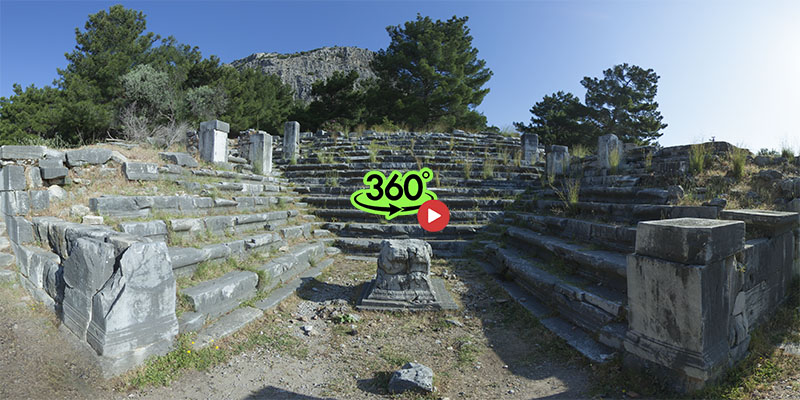
Agora
The Agora was more than just a marketplace; it was a symbol of democratic governance and civic engagement. It served as a venue for public assemblies, where citizens could gather to discuss and decide on matters of public policy, law, and administration. This practice of collective decision-making was a cornerstone of ancient Greek democracy and contributed to the city's prosperity and stability.
In addition to its political functions, the Agora was a hub of social and cultural life. It was a place where citizens could come together to celebrate festivals, participate in communal activities, and engage in intellectual discussions. The Agora also hosted various events, such as theatrical performances and athletic competitions, reflecting the importance of cultural and social activities in ancient Greek society.
The Agora was the economic center of Priene, where merchants and traders conducted business and exchanged goods. It was a bustling marketplace that facilitated trade and commerce, both within the city and with neighboring regions. The presence of shops, workshops, and stalls in the Agora created a vibrant economic environment that contributed to the city's wealth and prosperity.
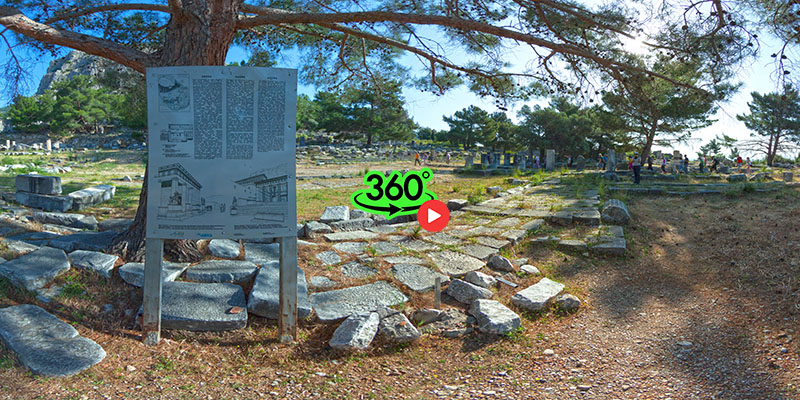
The north hall of Priene / Stoa
The North Hall was a large covered stoa (portico) that provided shelter and a space for various activities. The hall was designed with a series of columns supporting a roof, creating an open yet protected area for the city's residents. This architectural feature was typical of Hellenistic urban design, emphasizing functionality and aesthetic appeal.
The North Hall served multiple purposes, including commercial, social, and political functions. It was a place where merchants could set up stalls to sell their goods, citizens could gather for social interactions, and public officials could conduct administrative activities. The hall's design facilitated these diverse uses, making it a central hub of activity in the Agora. The North Hall was more than just an architectural structure; it was a symbol of the civic life and community spirit that characterized ancient Greek cities. It provided a space where citizens could come together to engage in commerce, discuss public affairs, and participate in social events. This sense of community and shared responsibility was integral to the social fabric of Priene.
In the North Hall of Priene is located the Priene Calendar Inscription. This two-part tablet announces the intention of the city of Priene to change its calendar so that it begins on the birthday of the Roman Emperor Augustus in September. By doing this, they signal that, for them, time itself depends upon the beneficence of the new emperor. Near the top of tablet 2 (see the darkened lines to the right), they acknowledge Augustus as the son of God whose birth marks the beginning of "good tidings" (ΕΥΑΝΓΕΛΙΟΝ) for the world. It was cut in 9 BCE, a few years before Jesus' birth. The tablet demonstrates that the term "good tidings" or gospel was a political term before Paul or Mark—or perhaps Jesus himself—decided to use it in conjunction with the message of Jesus.
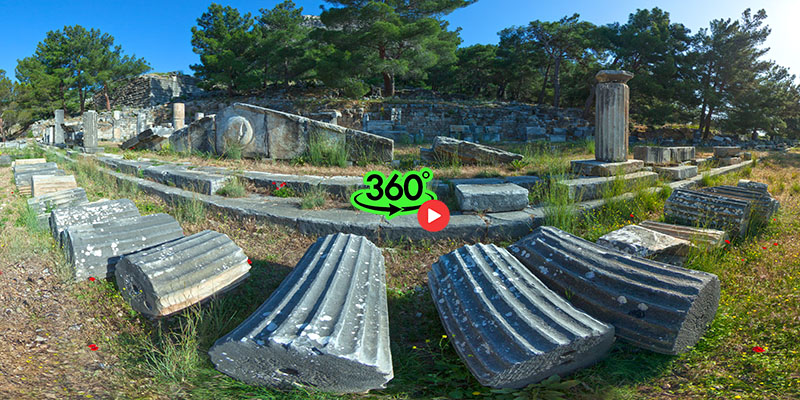
The Temple of Athena
The Temple of Athena, dedicated to the city's patron goddess, was constructed during the 4th century BCE under the patronage of Alexander the Great. The temple was designed by the renowned architect Pytheos, who was also responsible for the Mausoleum at Halicarnassus, one of the Seven Wonders of the Ancient World.
The Temple of Athena is an exemplary representation of Ionic architecture, characterized by its elegant proportions and intricate detailing. The temple was built on a raised platform, or stylobate, and featured a rectangular plan with a peristyle of Ionic columns surrounding the cella, the inner chamber that housed the cult statue of Athena.
The columns of the temple were adorned with fluted shafts and ornate capitals, which added to the overall aesthetic appeal of the structure. The entablature, consisting of the architrave, frieze, and cornice, was decorated with intricate reliefs that depicted mythological scenes and religious motifs. The temple's pediment, the triangular gable at the front and back of the structure, was also elaborately decorated with sculptural elements.
One of the most remarkable features of the Temple of Athena is its use of proportion and symmetry. Pytheos employed precise mathematical calculations to achieve a harmonious balance between the various architectural elements, creating a sense of order and beauty that was characteristic of Hellenistic architecture.
The Temple of Athena was not only an architectural masterpiece but also a center of religious and cultural life in Priene. As the city's patron goddess, Athena was revered as the protector of the city and the embodiment of wisdom, courage, and warfare. The temple served as a place of worship and pilgrimage, where citizens could offer prayers and sacrifices to the goddess.
In addition to its religious functions, the Temple of Athena also played a role in the cultural and intellectual life of Priene. The temple's construction and decoration reflected the artistic and intellectual achievements of the Hellenistic period, showcasing the skill and creativity of ancient Greek architects and artisans.
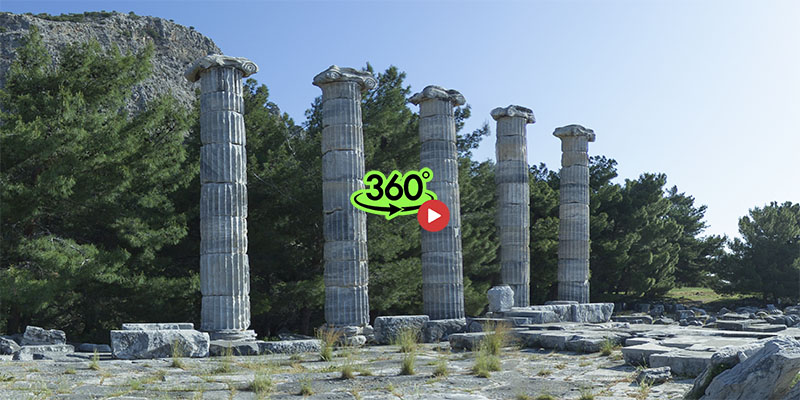
Street Sewers in Priene
The ancient city of Priene is renowned for its advanced urban planning and infrastructure, including its street sewers. The city's drainage and sewerage systems were integral to maintaining public health and sanitation, reflecting the ingenuity of Hellenistic engineering.
Priene was designed according to the principles of Hippodamian planning, characterized by a grid layout with streets intersecting at right angles. This systematic approach to urban design facilitated the efficient management of water and waste. The city's streets were equipped with underground sewers that collected and channeled rainwater and waste away from residential and public areas.
The sewerage system in Priene consisted of stone-built channels and clay pipes that ran beneath the streets. These channels were designed to carry both rainwater and sewage, preventing flooding and ensuring the cleanliness of the city. The sewers were connected to larger drainage outlets that discharged the waste into nearby rivers or the sea.
One notable feature of Priene's sewerage system was its self-cleaning drainage outlets. These outlets were designed to create a natural flow of water that helped to flush out debris and prevent blockages. This innovative design minimized the need for manual cleaning and maintenance, making the system more efficient and sustainable.
The sewerage system in Priene was a testament to the city's commitment to public health and hygiene. By effectively managing waste and water, the system contributed to the overall well-being of the city's residents. It also reflected the advanced engineering skills and knowledge of the Hellenistic period, showcasing the importance of infrastructure in ancient urban planning.
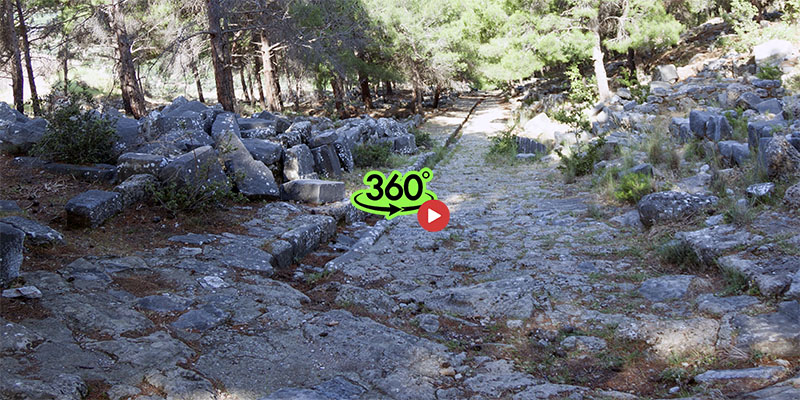
Synagogue
The presence of a synagogue in Priene indicates that there was a Jewish community in the city during the Hellenistic and Roman periods. This community likely consisted of Jewish merchants, artisans, and other settlers who had migrated to Priene for economic and social opportunities.
The synagogue in Priene is one of the earliest known synagogues in the ancient world. It was discovered during archaeological excavations and is believed to date back to the 3rd or 4th century CE. The structure was built in a typical basilica style, with a rectangular plan and a central nave flanked by aisles.
The synagogue featured a bimah (raised platform) for reading the Torah, as well as benches along the walls for seating. The presence of a mikveh (ritual bath) nearby suggests that the Jewish community in Priene observed traditional purification rituals. The architectural design of the synagogue reflects a blend of Jewish and Hellenistic influences, showcasing the cultural integration of the Jewish community within the broader context of Priene.
The synagogue served as a center of religious and communal life for the Jewish community in Priene. It was a place where Jews could gather for prayer, study, and social interaction. The synagogue also played a role in preserving Jewish traditions and identity in a predominantly Hellenistic environment.
The presence of a synagogue in Priene highlights the diversity and multiculturalism of the ancient city. It reflects the coexistence of different religious and ethnic groups within the same urban space, contributing to the city's cultural richness and dynamism.
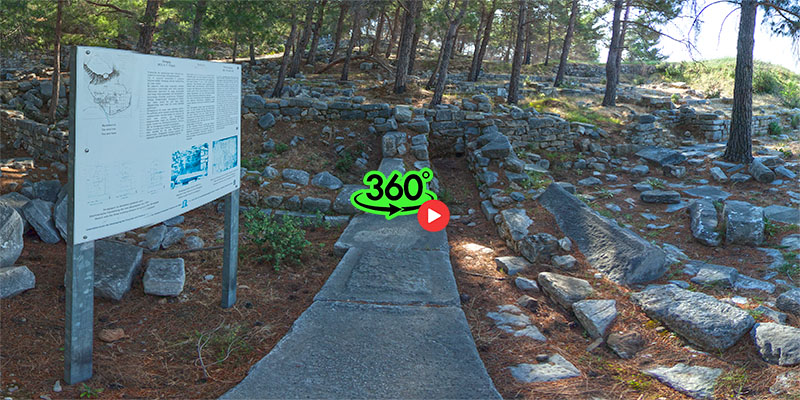
The Byzantine Church
The Bishop's Church, also known as the Byzantine Church, dates back to the early Byzantine period, around the 5th to 6th centuries CE. It was built during a time when Christianity was becoming more established in the region, and Priene had a substantial Christian community. The church served as the seat of a bishop, reflecting the city's religious significance during this period.
The Bishop's Church was designed in the basilica style, which was common for early Christian churches. It featured a rectangular plan with a central nave flanked by aisles. The church's interior included an ambo, an elevated platform where the scriptures were read during the Divine Liturgy. The ambo was located in the center of the nave, emphasizing the importance of the liturgical readings.
The church's walls were adorned with paintings and mosaics, which added to its aesthetic and spiritual significance. The floor of the church was covered with small-sized stones arranged in geometric patterns, and the inner walls were decorated with multiple layers of paintings, indicating that the church was used for an extended period, from the early phases of Christianity up until the late Byzantine era.
The Bishop's Church was a center of religious and communal life for the Christian community in Priene. It served as a place of worship, where the faithful could gather for prayer, liturgical services, and religious instruction. The church also played a role in preserving and promoting Christian traditions and teachings in a predominantly Hellenistic and later Roman environment.
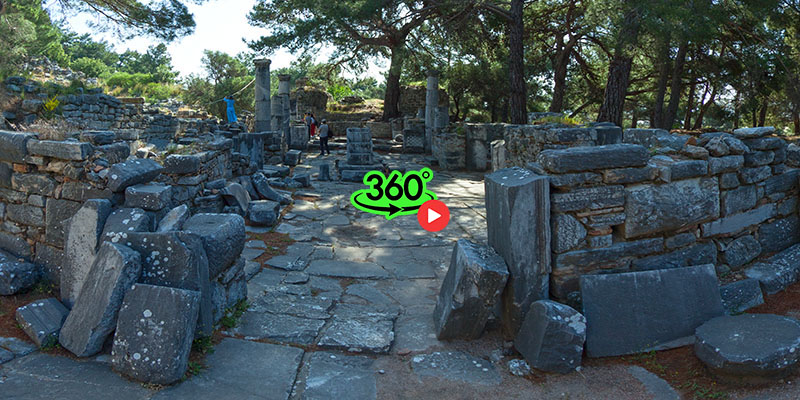
The Theatre
The theatre was constructed on the slopes of Mount Mycale, providing a natural incline for the seating area, or cavea. This design allowed for excellent acoustics and visibility, ensuring that all spectators could enjoy the performances. The cavea could accommodate approximately 6,500 spectators, making it a significant venue for public gatherings, theatrical performances, and political meetings.
One of the most striking features of the theatre is its well-preserved stage building, or skene. The skene was a two-story structure that served as a backdrop for performances and housed dressing rooms for actors. The lower level of the skene featured five doorways, which were used for entrances and exits during performances. The upper level was adorned with columns and decorative elements, adding to the grandeur of the theatre.
The orchestra, a circular area in front of the skene, was where the chorus performed and interacted with the actors. In Priene's theatre, the orchestra was paved with stone and had a diameter of about 15 meters. This space was crucial for the dynamic and engaging performances that characterized ancient Greek theatre.
The theatre in Priene also featured a unique architectural element known as the proskenion, a raised platform in front of the skene. The proskenion was used for performances and helped to elevate the actors, making them more visible to the audience. This innovation was an important development in the evolution of theatre design and influenced the construction of later theatres in the Hellenistic and Roman periods.
In addition to its architectural significance, the theatre in Priene played a vital role in the social and cultural life of the city. It was a venue for dramatic performances, which were an essential part of religious festivals and civic celebrations. The theatre also hosted political assemblies, where citizens gathered to discuss and debate important issues. This dual function as a space for both entertainment and civic engagement highlights the importance of the theatre in ancient Greek society.
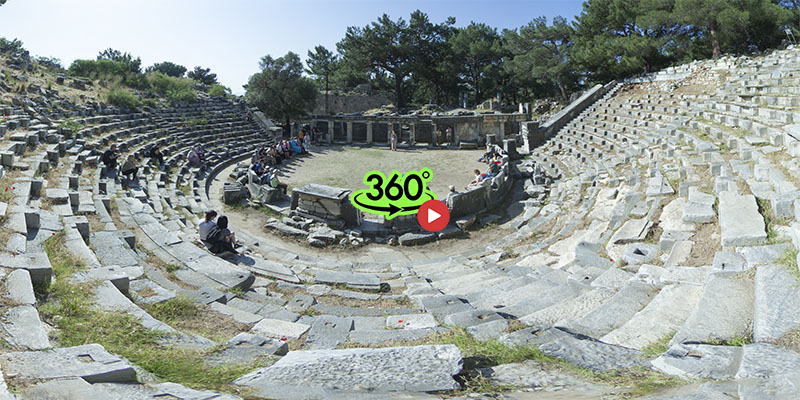
The Sanctuary of the Egyptian Gods
The Sanctuary of the Egyptian Gods was established during the Hellenistic period, around the 3rd century BCE. This period saw the spread of Greek culture and influence throughout the Mediterranean, including the incorporation of foreign deities into local religious practices. The sanctuary in Priene reflects this cultural exchange and the city's openness to diverse religious traditions.
The sanctuary was a walled enclosure, or temenos, measuring approximately 47 meters long and 31 meters wide. It contained a large rectangular altar oriented north-south, which was the focal point of the sanctuary. The altar was reached via a staircase in the south, reminiscent of Italian podium temple staircases1.
The sanctuary also featured a propylon, or monumental gateway, in the northern wall, providing access to the temenos. Along the west wall of the enclosure, there was a portico, which added to the architectural grandeur of the sanctuary. The design of the sanctuary combined elements of Greek and Egyptian architectural styles, reflecting the cultural fusion that characterized the Hellenistic period.
The Sanctuary of the Egyptian Gods was a center of religious and cultural life for the community in Priene. It served as a place of worship for the Egyptian deities, who were revered for their protective and healing powers. The presence of this sanctuary highlights the diversity and multiculturalism of Priene, where different religious traditions coexisted and were integrated into the local culture.
Inscriptions found within the sanctuary confirm its dedication to the Egyptian gods. These inscriptions, dating to the 3rd century BCE, mention the names of Isis, Serapis, and Anubis, among others. The sanctuary's religious significance extended beyond Priene, attracting worshippers from neighboring regions who sought the blessings of the Egyptian deities.
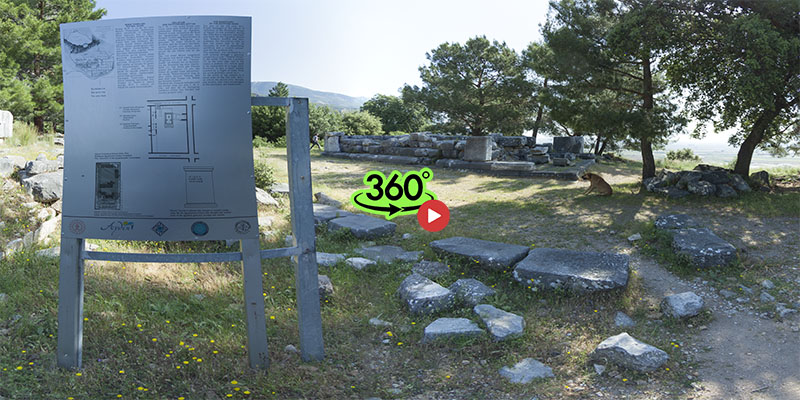
The Roman Bath Complex
The Roman Bath Complex in Priene dates back to the Roman period, around the 2nd century CE. It was built during a time when the city was under Roman rule, and the influence of Roman culture and architecture was prominent. The bath complex served as a public facility where citizens could bathe, socialize, and relax.
The Roman Bath Complex in Priene was designed with a series of interconnected rooms and facilities, each serving a specific function. The complex typically included the following components:
Apodyterium: The changing room where visitors could undress and store their belongings.
Frigidarium: The cold room with a cold-water pool for cooling down after a hot bath.
Tepidarium: The warm room, heated by an underfloor heating system called a hypocaust, where visitors could acclimate to the heat.
Caldarium: The hot room with a hot-water pool and steam, providing the main bathing experience.
Palaestra: An open courtyard used for exercise and physical activities.
The bath complex was equipped with advanced heating and plumbing systems. The hypocaust system, which involved a network of underground channels and flues, allowed hot air to circulate beneath the floors and through the walls, heating the rooms. Water was supplied through a series of aqueducts and pipes, ensuring a steady flow of fresh water for the baths.
The Roman Bath Complex in Priene was more than just a place for bathing; it was a center of social and cultural life. Public baths were an integral part of Roman society, serving as venues for social interaction, relaxation, and leisure. Citizens of all social classes could visit the baths, making them important spaces for community engagement and social cohesion.
In addition to bathing, visitors to the bath complex could engage in various activities such as exercise, games, and intellectual discussions. The baths also provided a setting for business transactions and political meetings, reflecting their multifaceted role in Roman society.
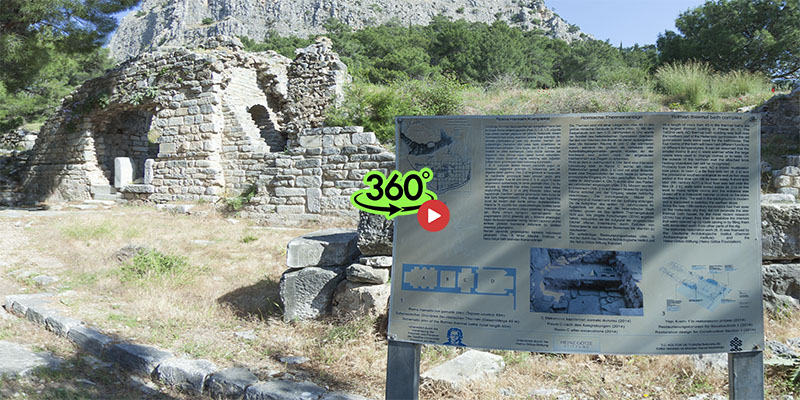
Sources and the literature:
Priene, ancient city, Turkiye, URL: https://www.britannica.com/place/Priene, povzeto 19.1.2025,
P. Thonemann, The Hellenistic Age: A Very Short Introduction, Chapter 6, Priene, str 93,
Priene - Bouleuterion, Prytaneion, Institute for Mediterranean Studies (IME), URL: https://www.ime.gr/projects/bouleuterion/en/katopsis/priene.html, povzeto 19.1.2025,
Priene, Bouleuterion, Perseus Digital Library, URL: https://www.perseus.tufts.edu/hopper/artifact?object=Building&name=Priene%2C%20Bouleuterion, povzeto 19.1.2025,
The Priene Calendar Inscription, Dr. Catherine Murphy, Santa Clara University, religious Studies Department, URL: https://webpages.scu.edu/ftp/cmurphy/courses/sctr027/artifacts/priene-calendar.htm, citirano 19.1.2025,
Wolf Koenigs, Der Athenatempel von Priene. Archäologische Forschungen, 33. Wiesbaden: Dr. Ludwig Reichert Verlag, 2016. 504. ISBN 9783954900640,
C. V. Crowther, 1996. “I. Priene 8 and the History of Priene in the Early Hellenistic Period.” Chiron 26: str. 195–250,
W. Blümel and R. Merkelbach, 2014. Die Inschriften von Priene. Vols. I and II. Bonn,
Arkeonews, A 1,600-year-old church has been discovered in Turkey’s ancient city of Priene, URL: https://arkeonews.net/a-1600-year-old-church-has-been-discovered-in-turkeys-ancient-city-of-priene/#google_vignette , povzeto, 19.1.2025,
Priene, Sanctuary of Egyptian Gods (Building), URL: https://www.perseus.tufts.edu/hopper/artifact?name =Priene%2C+Sanctuary+of+Egyptian+Gods&object=Building, povzeto, 19.1.2025,
The summary source: information boards in Hierapolis. | 
